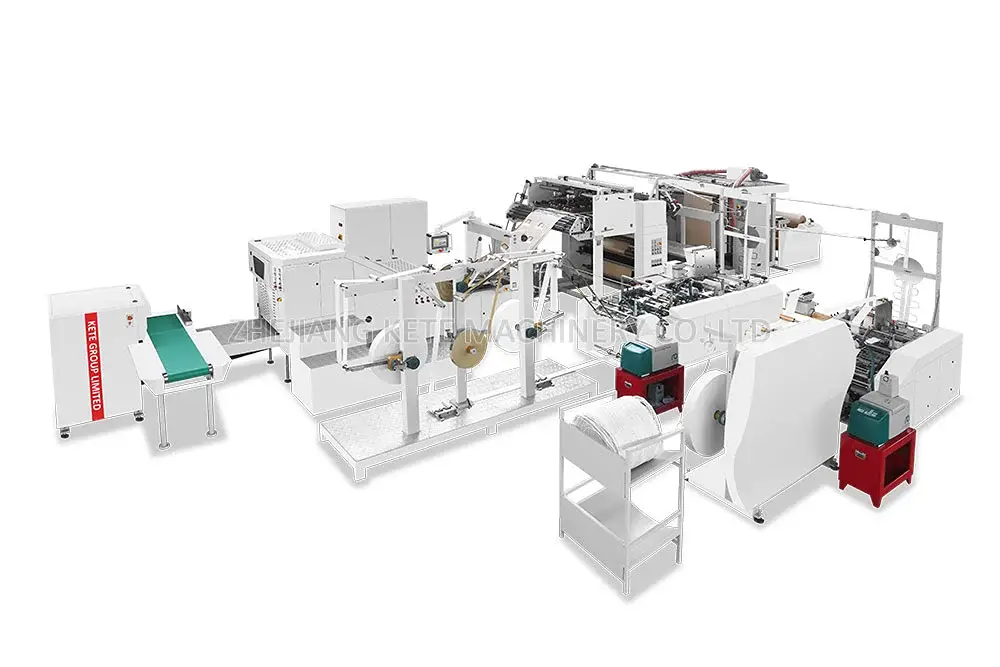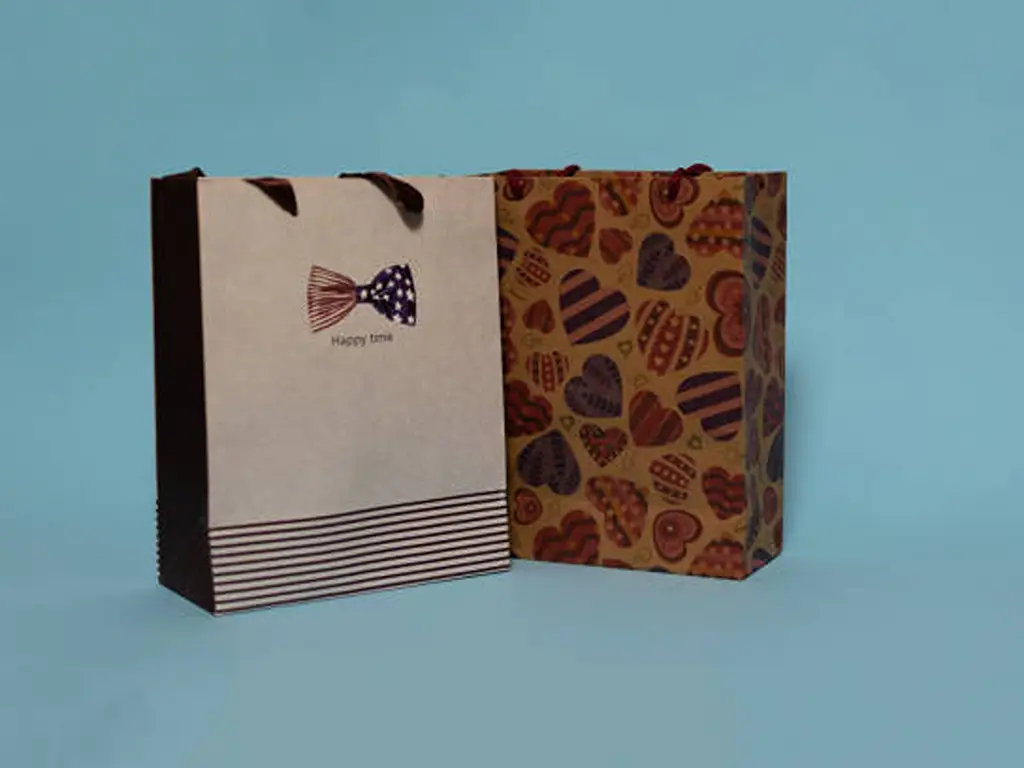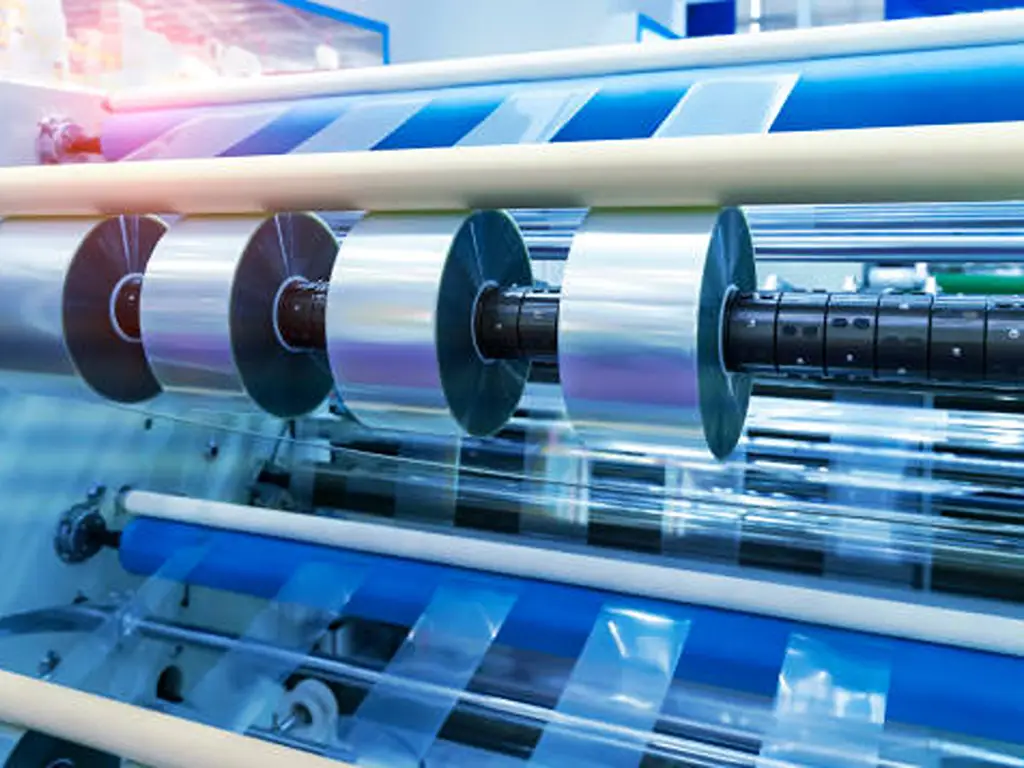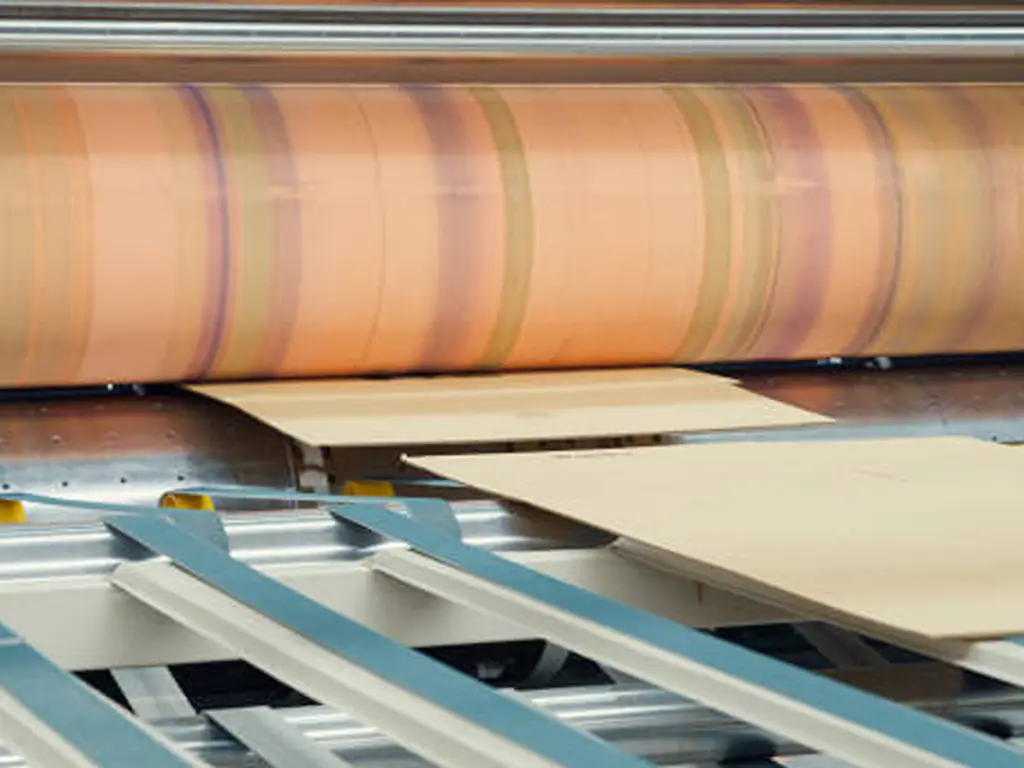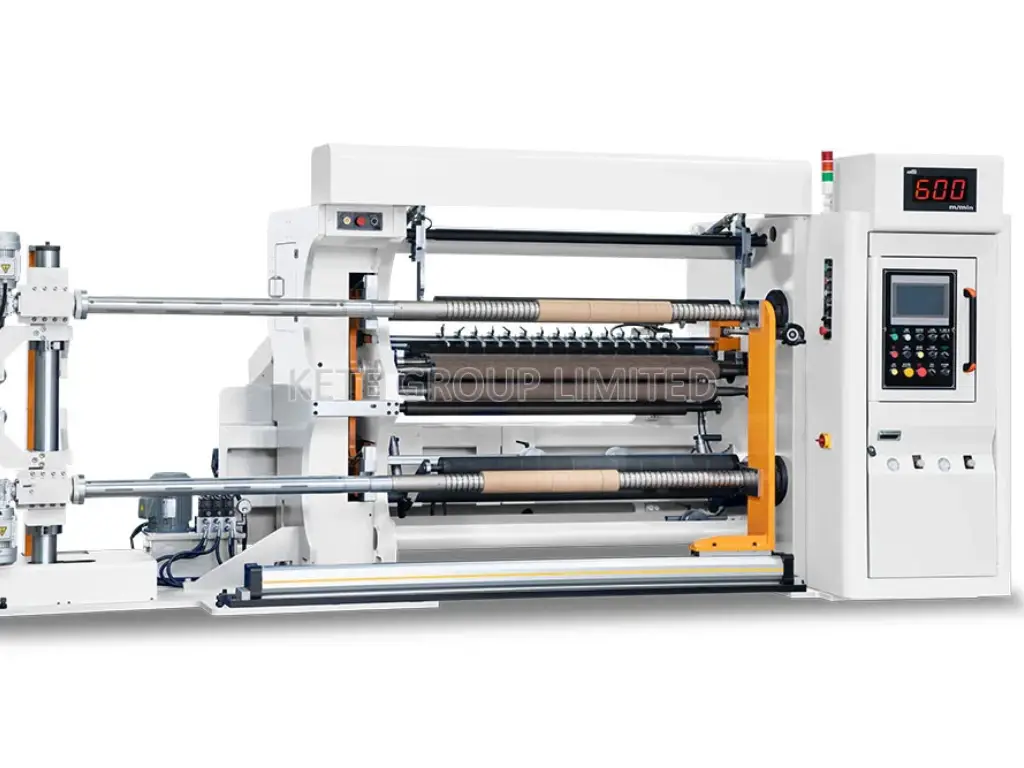
Pengantar Kantong Plastik
The use of plastic bags has become an integral part of our daily lives. From zipping to the grocery store to wrapping up our sandwiches, these different types of plastic bags are the real deal! We’ve got the zippy ones, the big trashy ones, and even the earth-hugging biodegradable plastic bags. Ever wondered how is a plastic bag made? The journey from tiny plastic pellets to a finished bag is a fascinating industrial process, centered around a technology known as Blown Film Extrusion. In this guide, we’ll break down exactly how to make plastic bags.
7 Steps: How to Make Plastic Bags?
Pernahkah Anda membayangkan bagaimana sebuah kantong plastik sederhana menjadi hidup? Proses pembuatan kantong plastik melibatkan serangkaian langkah yang rumit, yang masing-masing berkontribusi pada bentuk akhir kantong plastik. Mari kita lihat lebih dekat proses produksi plastik.
| Langkah | Deskripsi |
| Mentah Material Transformation | Raw polymers (derived from natural gas or petroleum) are transformed into plastic resin pellets through heating and pressure in machines like pelletizers. |
| Extrusion Process | The resin pellets are fed into an extruder, melted, and forced through a circular die to form a continuous plastic film tube. |
| Blown Film | The film tube is inflated with air, like a balloon, to stretch it to the desired thickness. |
| Cooling and Setting | The plastic film is rapidly cooled using air or water cooling systems to solidify it and ensure uniform thickness. |
| Coloring and Additive Mixing | Dyes and additives (e.g., UV stabilizers, tear resistance agents) are mixed into the molten plastic to give the film color and enhance its properties. |
| Pemotongan dan Penyegelan | The plastic film is cut into specific lengths, and the bottom is heat-sealed to form the bag’s base. |
| Printing (Optional) | Flexographic printing is used to apply logos, text, or designs onto the bags. |
| Quality Control and Testing | The bags undergo rigorous tests for thickness, strength, UV resistance, and other properties to ensure they meet quality standards. |
| Pengemasan dan Distribusi | The finished plastic bags are counted, stacked, packaged, and prepared for shipping to retailers or consumers. |
Dari Polimer hingga Pelet Resin: Transformasi
Polymers are the raw materials, often coming from natural gas or crude oil, that are the starting point for your plastic bag. Before they become the bags that carry your groceries or your lunch, they must first undergo a significant transformation. These polymers are turned into what we call plastic resin pellets. Think of these plastic pellets as the fundamental building blocks; they are the basic units that will be used to create a durable and functional plastic bag..
Now, how does this metamorphosis happen? The process involves a series of controlled stages. First, the raw polymers are subjected to carefully controlled heat and pressure in specialized machines like pelletizers. The quality of these initial pellets directly impacts the final product, which is why the entire manufacturing line, from the extruder onwards, must be robust. This breaks down their complicated chains into simpler, more manageable forms. This process yields small, cylindrical pellets. These pellets are the go-to material for the next steps because they’re consistent and easy to work with.
These aren’t just any old pellets. They are precisely formulated with additives like colorants or UV stabilizers. So, when you see a plastic bag that’s a particular color or extra tough, it’s all thanks to the special recipe of these resin pellets.
In short, this initial stage of turning polymers into resin pellets is critical for the steps that follow. It sets the mood and prepares the stage for the main event. You can’t just skip it and expect a great show.
The Extrusion Process: Crafting the Plastic Film from Extruder
The film extrusion process is where the crucial transformation begins. The resin pellets are loaded into an extruder, a machine that’s about to give our plastic bag its shape.
This is the heart of the manufacturing line. In the industry, this entire stage is called the Blown Film Extrusion process. The molten plastic is forced through a circular die, which shapes it into a continuous tube of thin plastic film. As the tube exits the die, it is pulled upwards and inflated with air, like a long balloon. This stretching is what creates the thin, strong film.
Saat plastik keluar dari ekstruder, plastik didinginkan secara cepat dengan menggunakan udara dingin atau air. Pendinginan mendadak ini memadatkan plastik, mengubahnya menjadi film. Ketebalan film ini dapat disesuaikan berdasarkan sifat yang diinginkan dari tas akhir. Butuh tas tugas berat untuk membawa batu bata? Anda akan membutuhkan lapisan yang lebih tebal. Mencari tas yang ringan untuk membawa sandwich? Film yang lebih tipis akan cocok.
Tapi, inilah fakta yang menyenangkan: film plastik tidak rata ketika keluar dari ekstruder. Ini sebenarnya berbentuk tabung. Jika Anda pernah memperhatikan bahwa sebagian besar tas belanja plastik tidak memiliki sisi yang mulus, inilah alasannya. Mereka dipotong dari tabung plastik yang terus menerus, memastikan kekuatan dan daya tahan.
Proses ekstrusi adalah bukti keajaiban manufaktur modern. Ini adalah perpaduan antara ilmu pengetahuan, teknik, dan sentuhan seni, memastikan bahwa film plastik tepat untuk tujuan yang dimaksudkan.
Mewarnai dan Menambahkan Aditif
Setelah kita memiliki film plastik, sekarang saatnya untuk memberinya kepribadian. Meskipun warna alami polietilena agak tembus cahaya, kantong plastik tersedia dalam berbagai warna, dari yang buram hingga transparan. Bagaimana caranya? Masuki dunia pewarna dan bahan tambahan.
Pewarna dicampur dengan plastik cair sebelum diekstrusi, untuk memastikan warna yang merata di seluruh film. Apakah Anda menginginkan warna merah yang cerah atau biru yang halus, semuanya tergantung pada campuran pewarna yang tepat.
But color isn’t the only thing added to our bags. Additives play a crucial role in enhancing the final plastic bag properties. Need a bag that can withstand sunlight without degrading? UV stabilizers are added. Want a bag that’s more flexible or resistant to tears? There are additives for that too. This allows the bag’s final properties to be tailored for its intended use.
Mendinginkan dan Mengatur Film
Setelah plastik keluar dari ekstruder, plastik berada dalam kondisi yang agak rentan. Plastik masih hangat, mudah dibentuk, dan belum dalam bentuk akhir. Di sinilah proses pendinginan berperan. Pendinginan bukan hanya tentang menurunkan suhu; ini tentang memastikan plastik mengeras dengan benar, mempertahankan ketebalan dan kekuatan yang diinginkan.
Air-cooling systems blow cold air onto the film, solidifying it rapidly. In some cases, water cooling systems are used, where the film is passed over chilled rollers. This rapid cooling is crucial. If the film cools too slowly, it can become uneven or develop imperfections. Think of it like chocolate; if it doesn’t cool uniformly, it can become grainy or discolored. The efficiency of the cooling ring is a major factor in production speed. A well-designed air ring, for example, provides a uniform airflow that cools the bubble evenly, preventing weak spots and allowing the machine to run faster without sacrificing quality.
Selama fase ini, rol juga memainkan peran yang sangat penting. Rol memastikan film diregangkan secara seragam, mencegah kerutan atau lipatan. Ini adalah keseimbangan suhu dan ketegangan yang rumit, memastikan filmnya tepat.
Pemotongan dan Penyegelan
With our film set and ready, it’s time to transform it into recognizable bags. But how do we go from a continuous roll of plastic film to individual bags? The answer lies in precision cutting and sealing. Before the bags are cut, the rolls of plastic film are often sent to a printing press. Here, logos, text, and graphics are printed onto the film using a process called flexography, which is fast and efficient for large-scale production.
Film dimasukkan ke dalam mesin yang memotongnya secara berkala, menentukan panjang tas. Tetapi tas bukan hanya tentang panjangnya; tas juga membutuhkan alas. Di sinilah penyegelan berperan. Bagian bawah setiap bagian yang dipotong disegel menggunakan panas. Panas ini menyatukan plastik, menciptakan ikatan yang kuat yang membentuk dasar tas. Segel ini harus kuat; inilah yang memberikan daya dukung pada tas.
Bagian atas tetap terbuka, siap digunakan. Pada sebagian kasus, fitur tambahan seperti pegangan atau ritsleting ditambahkan, yang semakin meningkatkan fungsionalitas tas.
Kontrol Kualitas: Menguji Ketebalan, Kekuatan, dan Properti Lain yang Diinginkan
Kontrol kualitas adalah pahlawan tanpa tanda jasa dalam dunia produksi kantong plastik. Lagi pula, tidak ada yang menginginkan kantong yang mudah robek karena tekanan sekecil apa pun. Jadi, bagaimana kantong plastik dibuat agar kualitasnya konsisten? Melalui pengujian yang ketat.
Setiap batch kantong menjalani serangkaian pengujian. Ketebalan tas diukur untuk memastikan keseragaman. Lagi pula, tas yang terlalu tipis mungkin tidak akan tahan lama, sementara tas yang terlalu tebal akan boros.
Uji kekuatan juga sangat penting. Tas diisi dan diregangkan hingga batasnya, untuk memastikan bahwa tas tersebut memenuhi standar yang ditetapkan oleh produsen. Pengujian lain mungkin termasuk paparan sinar UV (untuk memeriksa ketahanan terhadap kerusakan akibat sinar matahari) atau uji kelembaban (untuk memverifikasi kemampuan tas untuk menolak air).
Pengemasan untuk Distribusi
Setelah tas-tas tersebut lulus uji coba dengan baik, tas-tas tersebut siap untuk dikirim ke seluruh dunia. Namun pertama-tama, tas-tas tersebut harus dikemas. Mesin menghitung dan menumpuk tas, mempersiapkannya untuk distribusi. Tas-tas tersebut kemudian dimasukkan ke dalam kotak, siap untuk dikirim ke pengecer atau langsung ke konsumen.
Jenis Polimer yang Digunakan: Terbuat dari Apakah Kantong Plastik?
Pernahkah Anda bertanya-tanya terbuat dari apakah kantong plastik yang ada di tangan Anda? Anda tidak sendirian. Jenis polimer yang digunakan dalam kantong plastik ini lebih dari sekadar bahan yang mudah untuk dikatakan; mereka adalah tulang punggung dari berbagai kegunaan kantong plastik.
Polietilen
Let’s start with the big one: polyethylene. It’s the most common material you’ll find in plastic bags. Originating from natural gas and petroleum, polyethylene goes through a whole manufacturing process to become the bags we use daily. There are different types, like low density polyethylene (LDPE), high-density polyethylene (HDPE), linear low-density polyethylene(LLDPE).
LDPE is what you’ll find in those softer, more flexible, and typically more transparent bags—think produce bags at the grocery store.
HDPE is sturdier, more opaque or translucent, and is what you’re holding when you’ve got a bag full of canned goods.
Linear low-density polyethylene (LLDPE) is tougher and has a higher tensile strength than LDPE. It’s often used in stretch films, toys, and some flexible containers.
Polypropylene
Lalu ada polipropilena, bahan yang sangat kuat di dunia kantong plastik. Bahan ini memiliki titik leleh yang lebih tinggi, sehingga cocok untuk apa pun yang harus tahan panas. Anda akan sering menemukan polipropilena dalam tas belanja yang dapat digunakan kembali. Selain itu, polipropilena bersifat hidrofobik, yang berarti sangat baik dalam menolak air.
A Note on Additives and Colorants
It’s important to know that these base polymers are often just the starting point. To achieve specific properties, manufacturers mix in various additives. For instance, color masterbatch (a concentrated pigment) is added to create bags of any color, UV stabilizers are included to prevent the plastic from degrading in sunlight, and anti-static agents can be used to stop bags from clinging together. These additions are what give a plastic bag its final look, feel, and specific function.
So, whether it’s polyethylene or polypropylene, and with a little help from additives, each bag has its own set of perks that make it the right fit for different jobs.
Manfaat Besar dari Kantong Plastik
There’s a whole bunch of reasons we can’t live without plastic bags. But let’s just chat about the highlights and key plastic bag properties that make them an important part of our everyday life.
| Ringan | Salah satu keuntungan yang paling signifikan dari kantong plastik adalah sifatnya yang ringan. Fitur ini tidak hanya membuatnya mudah dibawa, tetapi juga mengurangi biaya transportasi. Ketika Anda mengirimkan produk, setiap ons sangat berarti, dan kantong plastik menawarkan solusi yang ringan namun kokoh yang dapat menghasilkan penghematan biaya yang besar. |
| Tahan lama | Penampilan bisa menipu. Meskipun strukturnya tipis, kantong plastik sangat tahan lama. Berkat polietilen densitas tinggi (HDPE) dan polietilen densitas rendah (LDPE) yang digunakan dalam proses pembuatannya, kantong-kantong ini dapat menahan beban yang cukup berat tanpa robek. Daya tahan ini menjadikannya pilihan utama bagi toko-toko kelontong dan gerai ritel. |
| Menahan Kelembaban | Fitur lain yang luar biasa dari kantong plastik adalah kemampuannya untuk menahan kelembapan. Belanjaan Anda tetap kering bahkan saat hujan deras di luar. Itulah keajaiban plastik. Bahan seperti polipropilena sangat efektif dalam menjaga kelembapan, sehingga kantong plastik ideal untuk penyimpanan makanan dan aplikasi yang sensitif terhadap kelembapan. |
| Keserbagunaan | Kantong plastik tersedia dalam berbagai bentuk dan ukuran, membuatnya sangat serbaguna. Baik Anda berbelanja pakaian, bahan makanan, atau barang elektronik, selalu ada kantong plastik yang dirancang untuk memenuhi kebutuhan Anda. Variasi ini mencakup fitur-fitur seperti pegangan, kantong penyimpanan ritsleting, dan bahkan jenis segel, yang menawarkan berbagai pilihan bagi konsumen dan bisnis. Selain itu, kemasan kantong dalam kotak sering digunakan untuk cairan seperti anggur kotak dan cairan lain dalam ukuran institusional. Jenis kemasan ini menyediakan cara yang nyaman dan efisien untuk menyimpan dan mengangkut cairan, sehingga mengurangi kebutuhan akan kantong plastik sekali pakai. |
Manfaat-manfaat ini menunjukkan kegunaan kantong plastik yang luar biasa, menjadikannya lebih dari sekadar kenyamanan; kantong plastik adalah produk rekayasa dan desain yang cermat.

Sustainability in Production: What Happens to Waste Material?
Di Balik Layar yang Ramah Lingkungan Saat membuat kantong plastik, ada sedikit aksi di balik layar yang tidak masuk ke dalam hasil akhir. Kita berbicara tentang potongan yang tidak terpotong, kantong yang "ups-itu-tidak-benar", dan sisa makanan yang tidak berhasil keluar dari mesin. Namun, di dunia yang sadar akan lingkungan saat ini, kami tidak hanya menyapu bersih mereka.
Recycling: The Green Comeback A good slice of this backstage waste is ready for an encore. Off-cuts and those bags that didn’t pass the audition can be gathered, can be gathered, melted down, and reprocessed into new bags. This recycling loop is an efficient way to reuse raw materials in plastic production, cutting down the need for fresh polymers. It’s not just eco-friendly; it’s also kind to the manufacturer’s wallet.
Disposal: The Thoughtful Exit But let’s face it, not every piece of waste is ready for a second act. Some, due to mixed materials or other issues, just can’t be recycled and reused. But even these get a dignified exit. Instead of being sent directly to a landfill, they’re often incinerated in a controlled setting, keeping the environment’s best interests at heart. And the cherry on top? Some top-notch facilities turn the energy from this process into electricity. Now that’s a bright idea!
Kesimpulan
From the initial melting of polymer pellets to the final cut and seal, understanding how a plastic bag is made reveals a process of precision engineering. The process of blown film extrusion, followed by automated conversion, transforms simple raw materials into a durable and versatile everyday item. Now that you’ve seen the intricate steps involved, you have a deeper appreciation for the technology and science behind this ubiquitous product.
Memulai Usaha Kantong Plastik Anda dengan KETE
Understanding how plastic bags are made is the first step. Bringing them to life requires precision machinery engineered for efficiency and quality. The blown film extruders, printing presses, and bag-making machines are all critical components of a successful production line.
If you’re considering entering the plastic bag industry or want to upgrade your current operations, having the right technology partner is key. At KETE, we don’t just supply machines; we provide complete solutions tailored to your production goals. Contact our experts for a technical consultation or to get a quote on a production line that fits your needs.
FAQS
Q: How much of plastic bags are actually recycled?
A: Although plastic bags are technically recyclable, less than 10% of them are actually recycled. Most end up in landfills, incinerators, or the environment due to contamination, mixed materials, or the lack of specialized recycling facilities.
Q: What are plastic bags actually made of?
A: Plastic bags are typically made from high-density polyethylene (HDPE) or low-density polyethylene (LDPE), both of which are petroleum-based plastics. These materials are lightweight, durable, and moisture-resistant, making them ideal for packaging and retail use.
Q: Why can’t Ziploc bags be recycled?
A: Ziploc bags are often made of recyclable polyethylene, but they’re frequently contaminated with food residue, oils, or moisture, which makes them difficult to process through standard curbside recycling programs. Additionally, their zipper seals can include mixed materials. However, some grocery stores offer drop-off bins specifically for clean, dry plastic films, including Ziploc bags.
Q: How many years does it take for plastic bags to decompose naturally?
A: Plastic bags can take 500 to 1,000 years to break down in the environment. Even then, they don’t fully biodegrade — they fragment into microplastics, which persist in ecosystems and pose long-term threats to wildlife and human health.

